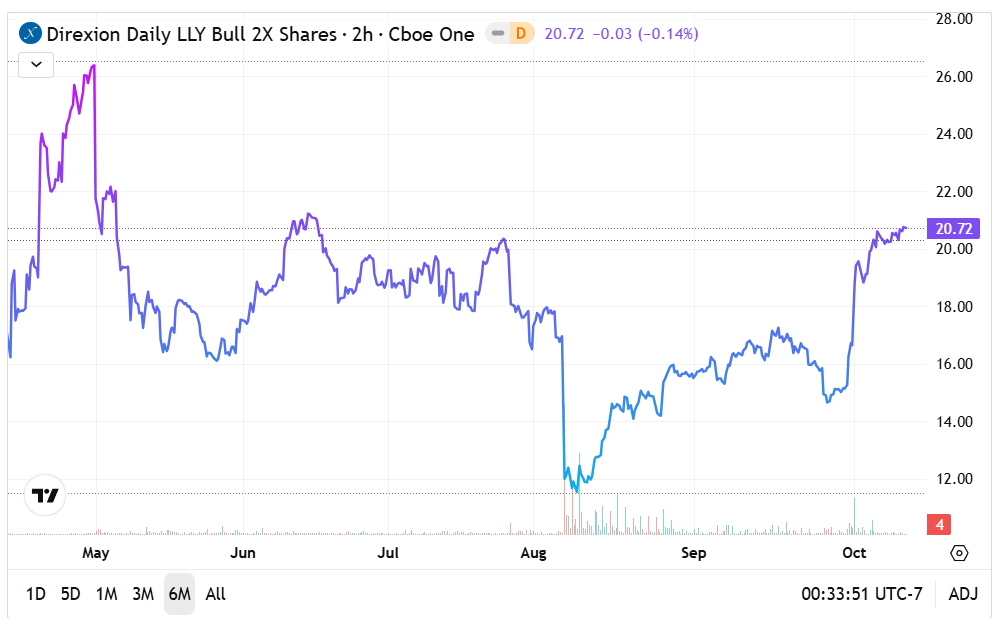
As the largest publicly traded U.S. healthcare enterprise, Eli Lilly & Co. (NYSE:LLY) has historically offered investors a reliable avenue for growth. Indeed, this narrative has been particularly powerful in 2023 and 2024, which saw LLY stock rise from around $360 to approximately $960 in late summer of last year. However, amid a challenging environment in healthcare, LLY presents both opportunities and risks.
Fundamentally, Eli Lilly represents a juggernaut in medical innovations. Recently, the company has taken a leadership role in the diabetes and obesity space with therapeutics such as Zepbound and Trulicity. It has also moved into breast cancer treatment with Verzenio. As well, its researchers have targeted autoimmune diseases like psoriasis with the drug Taltz.
All these and other innovations have contributed to Eli Lilly's financial performances, which generally beat analysts' expectations. In the most recent quarter, the pharma giant delivered earnings of $6.31 per share, beating Wall Street analysts' consensus estimate of $5.60. This latest figure was also well above last year's print of $3.92.
On the top line, Eli Lilly generated $15.56 billion, representing a positive surprise of 5.83%. Furthermore, the sales tally stood almost 38% above the year-ago result of $11.3 billion.
With momentum seemingly pointed in the right direction, bullish investors feel optimistic about the company's upcoming earnings disclosure, which will be released on Oct. 30. Here, analysts will be expecting earnings of $6.36 per share on revenue of $16.07 billion.
Still, not everything is decidedly positive about LLY stock. For one thing, the technical performance of the security is decent but not particularly remarkable. Since the start of the year, LLY has gained 10.8%. Add the 0.7% dividend yield, and the total return is approximately 11.5%. In contrast, the benchmark S&P 500 is up 14.51% during the same period.

Other more serious concerns revolve around the business. For example, one major concern is that Eli Lilly faces headwinds in its Zepbound prescription growth, especially with management anticipating volume-related challenges in the third quarter. Additionally, experts have sounded the alarm regarding downside risks to Mounjaro (tirzepatide), another diabetes and obesity medication.
Finally, pressure from competitors and uncertainties over the Trump administration's health policies have clouded LLY stock. As such, the positive year-to-date return has come through severe choppiness uncharacteristic of a major blue chip.
The Direxion ETFs: With intriguing narratives on both sides of the table, financial services provider Direxion provides two countervailing products for those who want to jump into the fray. Optimistic traders may consider the Direxion Daily LLY Bull 2X Shares (NASDAQ:ELIL), which tracks 200% of the performance of LLY stock. On the other end, pessimists may consider the Direxion Daily LLY Bear 1X Shares (NASDAQ:ELIS), which tracks 100% of the inverse performance of the namesake security.
Fundamentally, one of the central purposes of these Direxion ETFs is to facilitate a convenient mechanism for speculation. Generally, those interested in leveraged or inverse positions must engage the options market, which may involve unique complexities. With Direxion's specialized funds, however, traders can acquire the underlying units — much like any other publicly traded security. Therefore, the learning curve is reduced.
Still, prospective participants must be aware of the risks. First, adding leverage or incorporating an inverse profile on an underlying security tends to amplify volatility. Second, Direxion ETFs are designed for exposure lasting no longer than one trading session. Going beyond this recommended period may expose unitholders to positional decay tied to the daily compounding effect.
The ELIL ETF: With the ELIL ETF launching at an unfavorable time comparison wise (late March 2025), the bull fund finds itself down almost 11% since its debut.
- Sentiment has been powerfully bullish recently, with large candlesticks shooting the price action well above the 50-day moving average.
- One area of concern is volume, which has been fading noticeably since August. Ordinarily, volume should confirm price, which isn't happening here.

The ELIS ETF: Since its late March debut, the ELIS ETF is down a bit over 12%. However, the choppiness of the fund implies potential profitability with fortuitous timing.
- Currently, sentiment is extremely ugly, with red candlesticks sending the price action well below the 50 DMA.
- However, under the technical methodology, the Oct. 10 session appears to have formed an "inverted hammer," which may signal a potential sentiment reversal.

Featured image by Michal Jarmoluk on Pixabay.







